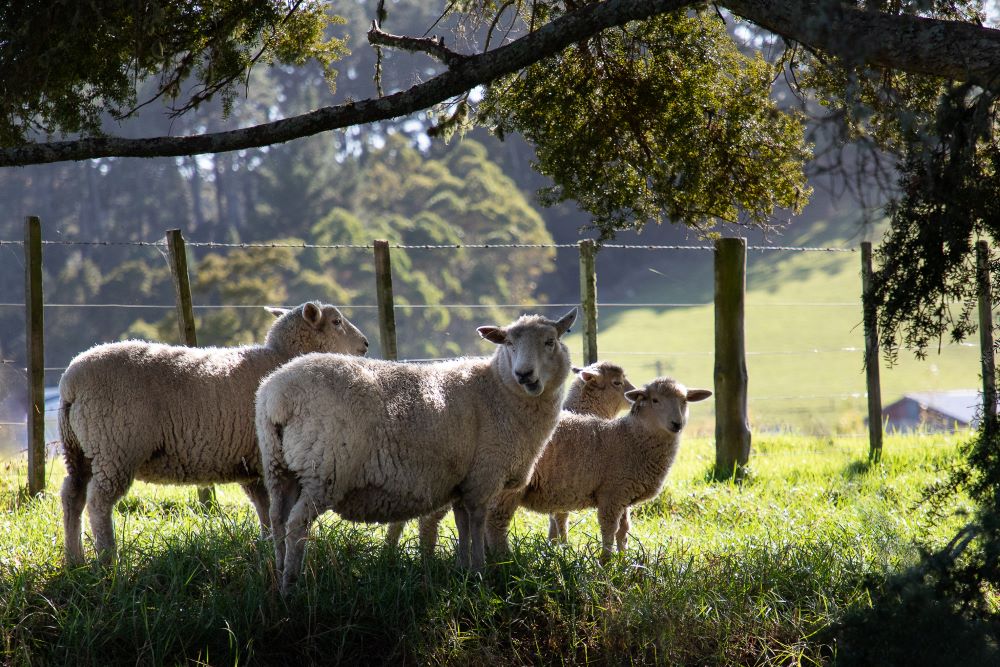Trees for shelter belts, shade and stock food
In addition to providing erosion control, trees are beneficial in the farm environment and fulfil a number of useful roles.
Principles
- Shelters belts should slow wind, not stop it entirely
If a shelter belt is too dense it can create turbulence and accelerate wind speed on the downwind side, defeating the purpose. - Planning is essential
It’s best to work with a farm map and use existing fence lines where possible. Plan all your shelter belts and decide on a priority order of planting. - A shelter belt must be managed to give good results
Do regular grass and weed control, trimming and tree health monitoring. Trees like macrocarpa need pruning to stop them becoming too dense. - Make it multi-purpose
Shelter belts can also provide timber, food, bee and stock fodder, aesthetics and wildlife habitat. - Keep stock out
Fencing must be stock proof with a 2-3 metre gap between the outside trees and fence line. - Think about shading
When using evergreen species remember that if the row runs due east-west, there will be a problem with shading on the southern side. A less dense species like eucalypt teamed with a denser and shorter understorey may solve this problem.
Types of shelter belt
Single row – these may be deciduous or evergreen. Trees must be closely spaced (2-3 metres) to prevent gaps and draughts underneath. A single deciduous row is useful in breaking up westerly winds and may be used as a secondary internal shelter belt.
Double row – generally one species provides high shelter and the other gives lower, denser shelter. Often the trees are offset in double rows to provide the understorey, and spacings are 2-3 metres within and between rows.
Triple row – three rows of trees are often used in very exposed or coastal situations.
Timberline – shelter trees are clear pruned or clear and alternate fan pruned, providing both timber and shelter. Fan pruning involves removing branches from the back and front of the tree, encouraging remaining branches to grow sideways.
Coastal situations
Much of Northland is close to the coast and prone to strong, salt-laden winds. Below is a list of trees that do well in coastal environments – most are suited to inland shelter belts too.
| Tall: (8 metres plus) |
| Casuarina cunninghamiana, River she-oak Casuarina glauca, Swamp she-oak Cryptomeria japonica, Japanese cedar Cupressus macrocarpa, Monterey cypress x Cupressocyparis ovensii, Oven’s cypress Eucalyptus botryoides, Southern mahogany Kunzeia ericoidies, Kanuka Metrosideros excelsa, Pohutukawa |
| Medium: (4-8 metres) |
|
Coprosma robusta, Karamu |
| Small: (under 3 metres) |
| Coprosma repens, Taupata Cortaderia splendens, Toetoe* Dodonaea viscosa, Akeake Olearia spp., Olearia Phormium tenax, Flax * This is a native species – do not plant pampas grass. |
For more advice on shelter belt planting, contact a land management advisor.
Trees for shade
In Northland’s hot, dry summers, animals are often exposed to hours of direct sunlight and high temperatures.
Providing trees for shade can reduce heat stress and production decline in animals, plus provide shelter, beautification, soil stability, and perhaps timber. Shelter belts and native bush edges can also provide shade for stock.
Pruning is important
To reduce moisture loss from pasture and discourage stock from camping in one small area, trees should be pruned high, allowing the leaf shadow to move around the tree.
Pruning will also give the option of future timber production from the tree.
Good trees for shade
The following trees are good for shade, either planted in the open or in groups in paddock corners. Deciduous trees allow sunlight to reach the base of the tree in winter.
Trees must be protected from animal browsing, especially from deer.
| Shade trees |
| Alectryon excelsus, Titoki Alnus cordata, Italian alder Corynocarpus laevigata, Karaka Eucalyptus spp., Eucalypts Fraxinus oxycarpa var 'Raywoodi', Claret ash Fraxinus uhdei, Mexican ash Gleditsia triacanthos, Honey locust Grevillea robusta, Silky oak Houheria populinea, Lacebark Liquidambar styraciflua, Liquidambar Liriodendron tulipifera, Tulip tree Magnolia grandiflora, Magnolia Metrosideros excelsa, Pohutukawa Paulownia tomentosa, Paulownia Pittosporum spp., Karo Tenufolium Lemonwood Platanus spp., Plane tree Podocarpus totara, Totara Populus spp., Poplars Quercus spp., Oaks Salix spp., Willows Ulmus procera var 'Louis van Houtte', Golden elm Vitex lucens, Puriri |
 Sheep in the shade of a totara tree.
Sheep in the shade of a totara tree.
Trees for stock food
With the increasing risk of summer droughts in Northland, it’s useful to plant trees which can be used as stock food. Different parts of trees may be used.
Types of stock food
Branches can be cut off the tree and left below for stock to eat. The best species to use are poplar and willow. Poplar leaf has the same nutritive value as lucerne hay. Willow leaves can reduce the worm burden in young stock.
A small fenced block with low growing poplar or willow can be opened for browsing.
Trees may be planted in the open or paddock corners to provide fruit or seed pods which drop to the ground. It’s a good idea make sure these types have trees have been bred for their fruit/seed production, as some cultivars are better than others.
| Good trees for stock food |
| Castanea sativa, Sweet chestnut (seeds) Chamaecytisus palmensis, Tree lucerne (pods & leaf) Gleditsia triacanthos, Honey locust (pods) Morus alba, Mulberry (fruit) Paulownia spp., Paulownia (leaf) Populus spp., Poplar (leaf) Quercus spp., Oaks (seeds - pigs mainly) (leaf - ducks & livestock) Salix spp., Willows (leaf) |

Poplar leaf has the same nutritive value as lucerne hay.
